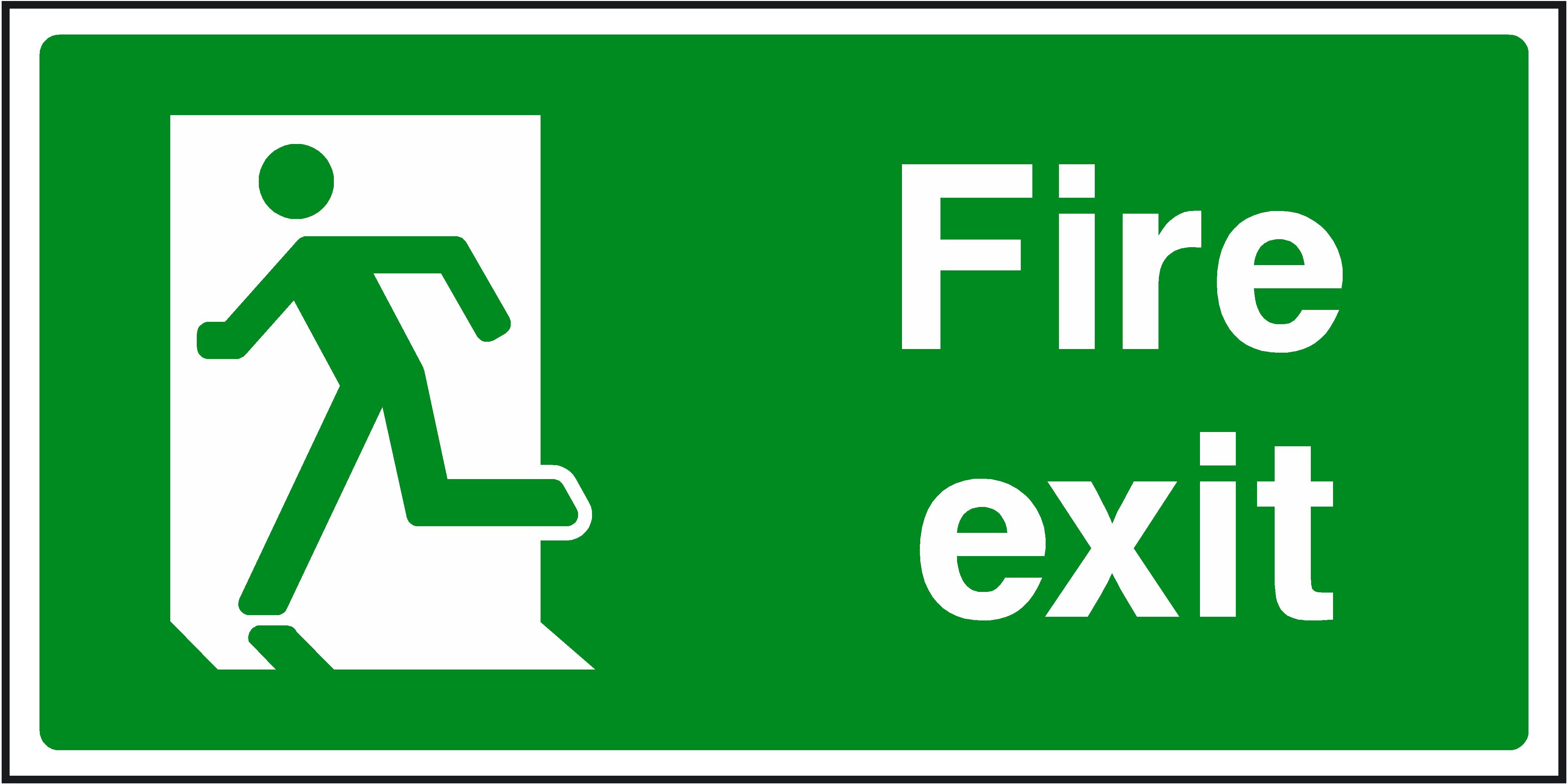Exit Signs for Various Purposes
 Exit signs are an essential part of any building, providing guidance and safety in case of emergencies. Whether it’s a commercial establishment, a school, or even your own home, having clear and visible exit signs is crucial. In this article, we will explore different types of exit signs and their uses.
Exit signs are an essential part of any building, providing guidance and safety in case of emergencies. Whether it’s a commercial establishment, a school, or even your own home, having clear and visible exit signs is crucial. In this article, we will explore different types of exit signs and their uses.
- Standard Exit Signs
 The most common type of exit sign is the standard exit sign. These signs typically feature the word “EXIT” in bold letters with an arrow pointing towards the designated exit. Standard exit signs are required by building codes and regulations, ensuring that occupants can easily locate the nearest exit.
The most common type of exit sign is the standard exit sign. These signs typically feature the word “EXIT” in bold letters with an arrow pointing towards the designated exit. Standard exit signs are required by building codes and regulations, ensuring that occupants can easily locate the nearest exit.
- Exit Signs with Arrows
 Exit signs with arrows are particularly useful in large or complex buildings where multiple exits are available. The arrows provide clear direction, indicating the correct path to follow for a safe evacuation. These signs often have the word “EXIT” accompanied by an arrow pointing towards the exit.
Exit signs with arrows are particularly useful in large or complex buildings where multiple exits are available. The arrows provide clear direction, indicating the correct path to follow for a safe evacuation. These signs often have the word “EXIT” accompanied by an arrow pointing towards the exit.
- Emergency Exit Only Signs
 Emergency exit only signs are specifically designed for restricted areas where access should be limited to emergencies only. These signs typically feature the words “EMERGENCY EXIT ONLY” or “NO RE-ENTRY” to prevent unauthorized entry. Placing these signs on doors or passages ensures that people do not mistakenly use these exits on a regular basis.
Emergency exit only signs are specifically designed for restricted areas where access should be limited to emergencies only. These signs typically feature the words “EMERGENCY EXIT ONLY” or “NO RE-ENTRY” to prevent unauthorized entry. Placing these signs on doors or passages ensures that people do not mistakenly use these exits on a regular basis.
- No Exit Signs
 No exit signs are important in areas where exits are not available. These signs inform people that there is no way out from that particular location. They are typically used in dead-end corridors or spaces that are not meant for emergency evacuation. Placing these signs prevents individuals from searching for exits where none exist.
No exit signs are important in areas where exits are not available. These signs inform people that there is no way out from that particular location. They are typically used in dead-end corridors or spaces that are not meant for emergency evacuation. Placing these signs prevents individuals from searching for exits where none exist.
Conclusion
Exit signs play a vital role in ensuring the safety of individuals in various settings. From standard exit signs to those with arrows, emergency exit only signs, and no exit signs, each serves a specific purpose. By installing and maintaining clear and visible exit signs, you can help guide people to safety during emergencies.
Remember, exit signs should be strategically placed throughout the building, ensuring that they are easily visible from any location. Regular inspections and maintenance are necessary to ensure that the signs are in good working condition and not obstructed by any objects.
Overall, exit signs are a simple yet effective measure to enhance the safety of any premises. Whether you choose to use printable exit signs or purchase pre-made signs, make sure they comply with local building codes and regulations. By doing so, you contribute to creating a safer environment for everyone.